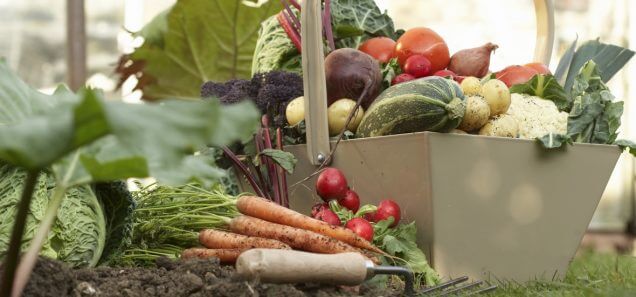blog
When And How To Transition To Solids

With a better understanding of your baby’s eating habits and nutritional needs, you’ll feel more comfortable when it’s time for your little one to start solids. There are four key areas to remember – signs of readiness, quality over quantity, self-weaning, and making the first bites appealing, nutritious, and fun.
Signs Baby is Ready for Solids Checklist
When it comes to solids, think less about the calendar and more about your baby. Starting at four months of age, the bellies of healthy, full-term babies are ready to handle solids, but it’s completely normal if your baby isn’t ready yet. There is no proven disadvantage to waiting a few extra weeks as long as solids are introduced by six months. Pushing your baby to start solids when they aren’t ready can actually cause more harm than good.
The signs your baby is ready for solids include:
- A diminished tongue-thrust reflex – babies are born with the instinctive need to push everything out of their mouth with their tongues. If this reflex is still present, it will be difficult for your baby to swallow food.
- Sitting up with support
- Holding their heads up
Baby shows interest in solid foods by doing at least one of the following:
- Reach for food
- Track food from your plate to your mouth
- Lick their lips when you’re eating
- Open their mouth for food
- Try to eat your food
If your baby shows all four signs, she’s ready to try solids! If she only shows one to three signs, she’s close, but not quite there. Check your baby’s progress each week, noting when they show a new sign of readiness.
Quality Over Quantity When Transitioning Baby to Solids
The transition to solids is a time to focus on the quality of experiences your baby has and not the quantity of solids they’re eating. As your baby tries solids he’ll strengthen his oral motor muscles and coordination, practice swallowing, and eventually chewing. He’ll also learn eating is a social experience and food is pleasurable.
When choosing food for your baby, quality is what matters. Not all baby food is created equal, and the way the food is prepared and heated, and what it’s mixed with affect just how much nutrition your little one will get. That’s why I recommend using a combination of homemade baby food and commercial baby food, from a brand you trust. It’s easy to find jars and pouches in the baby food aisle that are diluted with water and broth, and overly sweetened with too much fruit, even when there is no fruit listed on the front of the label. Look to purchase baby foods that are made of the ingredients that are listed on the front of the label. For example, Beech-Nut Naturals(R) carrots should only have carrots on the ingredient list.
Fresh, high-quality baby foods have more vibrant tastes and colors made to excite your baby’s senses. Say goodbye to the bland and dull, and say hello to bold and bright. So, when comparing the price of store-bought baby food, compare the quality and nutrition – not the amount you’re getting for the price.
Weaning Baby to Starting Solids
When first trying solids, you should not immediately wean your baby off of milk or formula. Babies need practice eating, and until their skills are more developed, they can’t consume enough nutrients from solid foods.
Babies have an amazing ability to wean themselves, a process called self-weaning. This starts around six months of age when their bellies have more room. You’ll notice they tolerate larger volumes of milk at each single feeding, and reduce their total number of feedings as they eat more solids.
Guide to Baby’s First Bites of Solid Food
- Begin with single foods. If your baby doesn’t tolerate a food, you need to pinpoint the exact ingredient. Once your baby has tried two separate foods successfully, feel free to blend them together at later meals.
- Start with smooth puree that has a consistent texture when spooned from the jar. I recommend beginning with stage 1 jars from Beech-Nut’s Organics or Naturals lines or making it yourself.
- Use a small baby spoon that is rubber coated or made of BPA-free plastic.
- Give iron-containing foods, such as iron-fortified baby cereals, as one of the first few bites to babies who drink breast milk and do not take any iron supplements. Unlike breast milk, formula contains iron, so if your baby drinks formula, you do not need to offer iron-rich foods.
- Offer a variety of flavors. Exclusively offering fruits will not expose your baby’s taste buds to other nutritious foods, like veggies and proteins.
- Think vibrant and varied colors to excite your baby’s senses.
- Offer one solid meal a day for the first few weeks. Remember, a meal at his age is just a few small bites.
- Completely pureed soft raw fruits, like avocados and bananas, are safe. Harder fruits and veggies need to be cooked.
- Practice spoon-feeding. Avoid putting food in your baby’s bottle or exclusively feeding from pouches.
- Avoid the following during the first year:
- Choking hazards (hard nuts, small seeds, pits, hard, dry meat, whole grapes, dried fruit, hot dogs, tough skins, sticky foods, popcorn)
- Honey
- Unpasteurized dairy
- Juice
- Foods with added sugar
Consult your pediatrician for recommendations specific to your baby’s diet.


